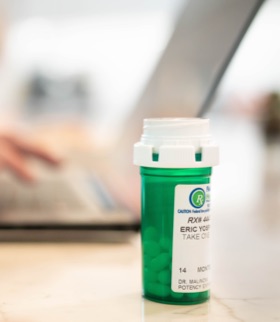
Challenges
The Affordability Landscape Today
As the utilization of specialty therapies and the frequency in HDHPs rise, the industry is seeing more patients required to shoulder a larger share of the costs of care. This has led to a unique set of challenges around patient access and affordability.

As pharmacy benefit managers (PBMs) and health plans attempt to contain costs, many have zeroed in on specialty drugs, in some cases implementing programs that require patients enrolled in HDHPs to pay a larger share of the cost for specialty medications.

Affordability Challenge: The Rise of HDHPs
The increasing adoption of HDHPs makes biopharma co-pay programs more important than ever to help patients afford their prescriptions. Co-pay cards can make a major difference for patients under HDHPs, especially at the beginning of the year when deductibles reset. However, the proliferation of HDHPs — and biopharma’s response to offset patient costs through co-pay programs — has given rise to co-pay accumulators as a cost-control tactic among payers and PBMs.
Originally designed to control medication costs by encouraging the substitution of lower-priced generic drugs, co-pay accumulators can have serious medical and financial consequences for patients in HDHPs whose conditions respond best to specialty drugs for which there are no alternatives. In addition, the programs add another layer of confusion for patients already struggling to understand their health-plan benefits and cope with their health condition.
By the Numbers
Impacts of HDHPs
The continuing growth of HDHPs and the challenge of meeting deductibles and other out-of-pocket healthcare expenses means that an increasing number of patients with chronic health conditions need co-pay assistance to afford their specialty drugs.
- Enrollment in HDHPs reached 47% of the commercially insured, pre-Medicare population in 2018, representing a 3.3% increase from 2017.5
- A study published in JAMA Internal Medicine examining the effect of HDHPs on low-income adults with multiple chronic conditions found that almost half had a family out-of-pocket healthcare burden exceeding 20% of family disposable income.6
Affordability Challenge: The Rise of Specialty Therapy
The rise of specialty therapy has introduced challenges that break the mold of traditional pharmacy benefit design and require stakeholders to rethink accessibility and affordability for patients. The data shows that the influence of this market will not diminish any time soon.

Specialty therapies are a $318 billion industry representing 41% of the overall pharmaceutical market spend.1

Nine of 2020’s 10 top-selling drugs are predicted to be specialty medications.

Express Scripts’ 2018 Drug Trend Report found that in 2018 commercial pharmacy plans, specialty utilization increased 7.3%.2

Access Market Intelligence reports that 42% of retail prescriptions support patients through co-pay savings programs. These programs save patients $261 on average.3

Affordability Challenge: The Rise of Accumulators
Co-pay accumulator programs have for several years been a significant healthcare consumer issue and continue to be a challenge for biopharma companies as they work to bring specialty therapies to patients with chronic diseases. As regulatory bodies fight to control this affordability crisis, biopharma too has an important role to play in addressing the issue.
In 2019, Arizona, Virginia and West Virginia passed legislation requiring health plans to consider all payments made by a patient or on behalf of a patient in calculating the patient’s cost-sharing obligations, including payments made using co-pay cards issued by biopharma companies. These were the first states to take aim at accumulator programs in the interests of consumers. More states are expected to follow suit.
In the meantime, with the use of accumulators on the rise, biopharma companies are, in effect, overfunding many co-pay programs, since the funds invested in are being blocked from benefiting patients. Furthermore, with the rise of high-deductible health plans, patients’ share of payment for medications has increased exponentially. Without better payment options for patients, access to therapy is greatly affected.
By the Numbers
Impacts of Accumulators
Given the overall trend toward greater healthcare cost-sharing by patients, co-pay accumulator programs are likely to continue their expansion. Data from RxCrossroads by McKesson across multiple therapeutic areas and more than 20 brands reveals that:
- Nearly 5% of patients were impacted in 2018, a figure that doubled when plans reset in 2019.7
- Patients covered by HDHPs with co-pay accumulator programs have 1.5 fewer prescription fills than those without accumulators as part of their HDHPs.7
- Accumulator programs affected between 2% and 5% of patients in 2017, a number that rose to between 5% and 10% of patients in 2018.8
- By 2020, an additional 28% will have encountered co-pay accumulators.9
According to primary research conducted by RxCrossroads by McKesson, accumulators pose a direct and significant impact on adherence.
It’s scary for patients to be stuck with a huge unexpected cost, and it impacts their health, no matter what condition they have. Are there alternative treatments they could go to? No. And they could build up resistance to a whole class of drugs if they stop taking their existing antiviral drug. Treatment these days is prevention; when they are on treatment, the virus is suppressed and they don’t transmit the virus to others, so treatment is very important.4the director of a nonprofit HIV/AIDS patient-advocacy organization
